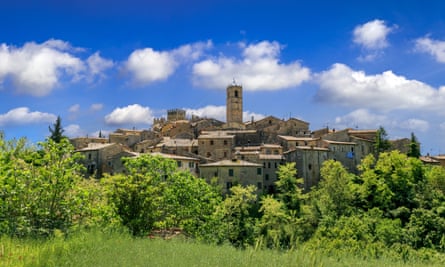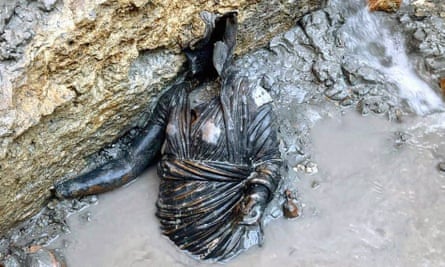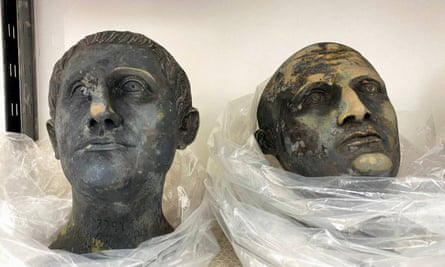‘It’s as if we found oil’: Tuscan town savours discovery of spa trove | Italy
Since she was a child, Martina Canuti has been venturing down the steep hill flanking the Tuscan town of San Casciano dei Bagni, known by residents as “the sacred mountain”, to take a dip in the two ancient hot springs famed for their therapeutic benefits.
Little did she know that just a few metres away lay a sanctuary built by the Etruscans in the second century BC, containing a trove of treasures that could now reverse the fortunes of this relatively isolated town of 1,400 inhabitants near Siena.
“We used to gather at the springs for parties too,” said Canuti. “It is odd to think that these treasures were so close by, but then again we were always curious as to why nothing relevant had ever been found. This is an area rich in spas built by the Etruscans and Romans, and plenty of relics had been found in towns nearby, so why not in San Casciano dei Bagni?”
Agnese Carletti, the town’s mayor, was curious too. Supported by funding from the government and private donors, she helped to set in motion an archaeological project that led to the discovery of 24 bronze statues, mostly dedicated to the gods, buried by mud and boiling water in the ruins of a network of thermal springs that had been a place of worship for both the Etruscans and Romans.
“It’s as if we found oil,” Carletti said. “Maybe all these gods are now bringing us some good fortune.” She said she hoped the find would trigger a tourism boost in a town facing economic challenges because of depopulation.

The bronzes – the largest discovery of their kind in Italy – included a sleeping ephebe lying next to Hygeia, the goddess of health, with a snake wrapped around her arm, and a statue dedicated to Apollo, the god of sun and light.
The statues, which experts have said were commissioned by wealthy families in the area, once adorned the rim of the oval-shaped baths before being immersed into the water in a ceremony believed to have occurred in the first century AD.

Excavations have also unearthed 6,000 coins, along with an array of votives. These include small figurines depicting the palm of a hand holding money, a penis, a pair of breasts and a child wrapped in swaddling clothes that would have been offered up to the gods and holy water in the hope of bringing conception or general good luck.
The project, which residents have affectionately likened to one that might have been undertaken by Indiana Jones, is led by Dr Jacopo Tabolli, an assistant professor at the University for Foreigners in Siena.

He said the sanctuary, which was made more opulent during the Roman period, when it was frequented by emperors including Augustus, remained active until the 5th century AD, before being closed down, but not destroyed, during Christian times. The pools were sealed with heavy stone pillars while the divine statues were left in the water, which was rich in…
Read More: ‘It’s as if we found oil’: Tuscan town savours discovery of spa trove | Italy
